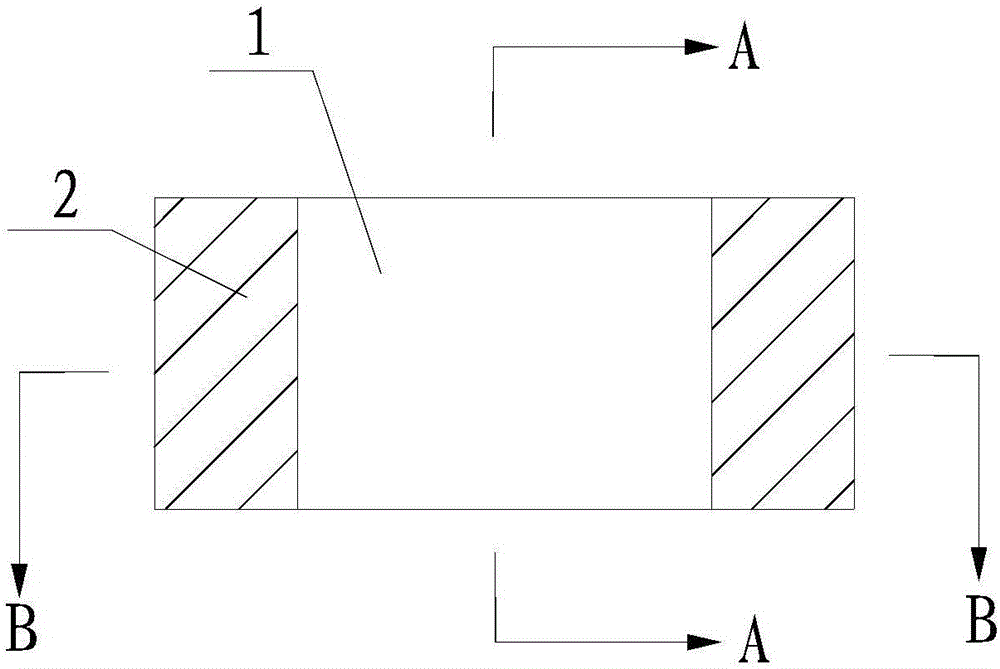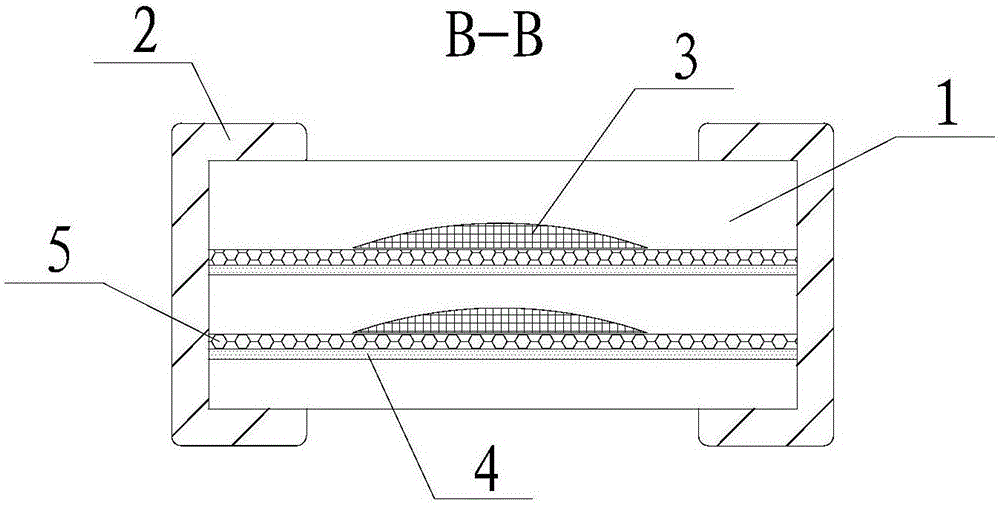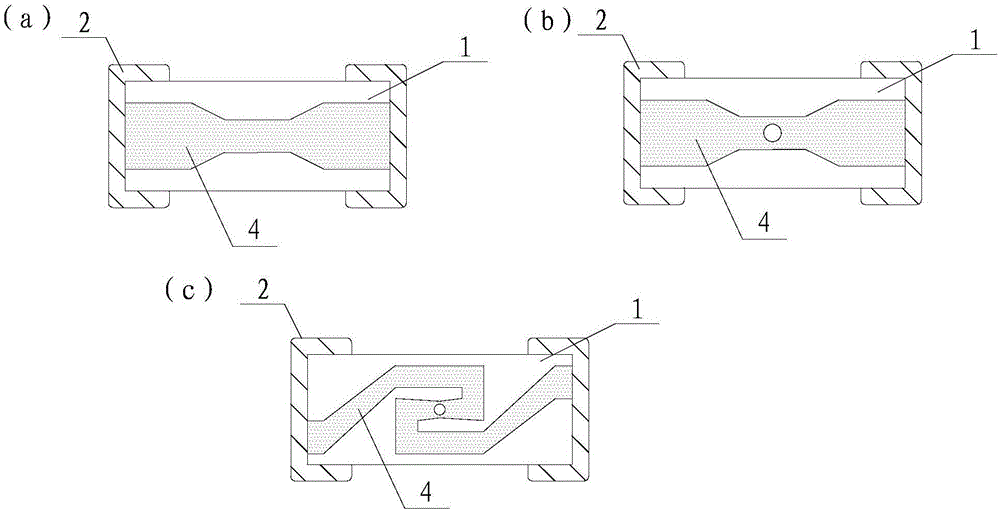Fuse with internal buffer layer, and manufacturing method for fuse
A buffer layer and fuse technology, applied in the field of fuses, can solve problems such as discrete resistance of fuse links, defects of fuse links, and endangering line safety, so as to improve withstand voltage capability and safe breaking capability, and overcome shrinkage mismatch or mutual diffusion , Guarantee the effect of arc extinguishing and pressure resistance
- Summary
- Abstract
- Description
- Claims
- Application Information
AI Technical Summary
Problems solved by technology
Method used
Image
Examples
Embodiment 1
[0042] like Figure 1 to Figure 4 The shown fuse with a built-in buffer layer mainly includes an insulating base 1 , a terminal electrode 2 , a buffer layer 3 , a fuse 4 and an arc extinguishing layer 5 .
[0043] The fuse 4 is formed in the insulating matrix 1, and there is at least one in number; it can be set to a thickness corresponding to the specification according to actual needs; its shape can be straight or curved, and its fusing position is guaranteed to be in the buffer layer 3 And the area covered by the arc extinguishing layer 5 to achieve the effect of pressure relief and arc extinguishing. The fusing position can be in the shape of narrowing, prefabricated holes or grooves, as long as it can ensure that the fuse 4 can be effectively fused under the condition of high voltage and overcurrent; image 3 The fuse 4 shown in (a) has a shape of "big at both ends and small in the middle", that is, the middle of the fuse 4 is narrowed so that the width of both ends is gre...
Embodiment 2
[0055] This embodiment provides a fuse with a built-in buffer layer. Its structure is similar to that in Embodiment 1. There are two fuses 40 and two arc-extinguishing layers 50. The difference is that the buffer layer 30 and the fuse 40, The positional relationship between the arc extinguishing layers 50 is different. like Figure 5 As shown, one of the two buffer layers 30 is formed on the upper surface of the arc extinguishing layer 50 (the upper one of the two arc extinguishing layers 50), while the other is formed on the lower surface of the other fuse 40 ( the lower one of the two fuse links 40).
Embodiment 3
[0057] This embodiment provides a fuse with a built-in buffer layer. Its structure is similar to that in Embodiment 1. There are two fuses 41 and two arc-extinguishing layers 51. The difference is that there is only one buffer layer 31, such as Image 6 As shown, it is located on the upper surface of the arc extinguishing layer 51 (the upper one of the two arc extinguishing layers 51).
PUM
 Login to View More
Login to View More Abstract
Description
Claims
Application Information
 Login to View More
Login to View More - R&D
- Intellectual Property
- Life Sciences
- Materials
- Tech Scout
- Unparalleled Data Quality
- Higher Quality Content
- 60% Fewer Hallucinations
Browse by: Latest US Patents, China's latest patents, Technical Efficacy Thesaurus, Application Domain, Technology Topic, Popular Technical Reports.
© 2025 PatSnap. All rights reserved.Legal|Privacy policy|Modern Slavery Act Transparency Statement|Sitemap|About US| Contact US: help@patsnap.com



